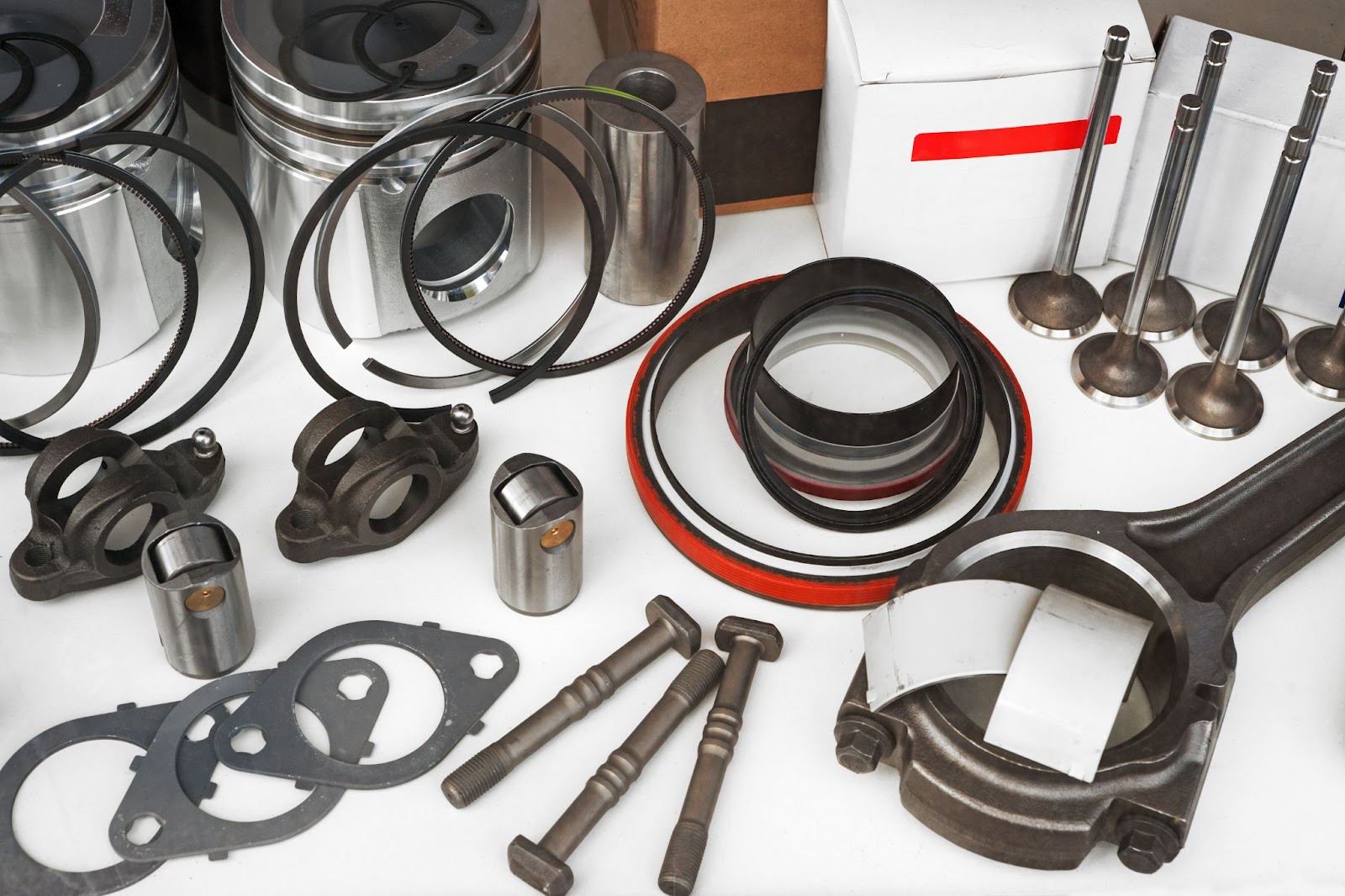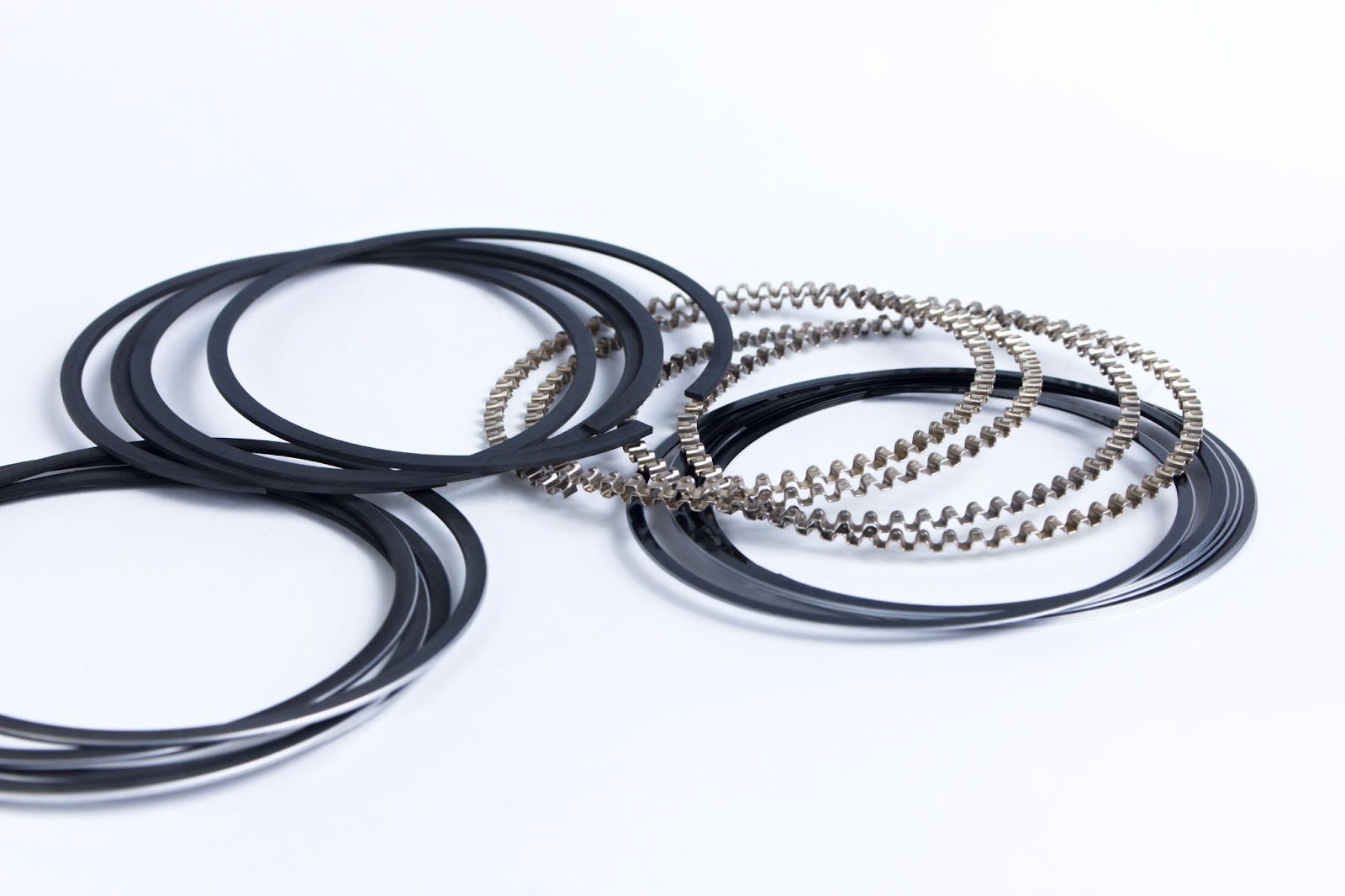How to Install Piston Rings

Piston rings are essential to any internal combustion engine, and there are a few different ways to install them. The most common method is installing the rings individually, but there are also kits available that allow for a much quicker installation.
In this article, we will discuss the definition as well as the purpose of piston rings. We will also go over the indicators of a bad piston ring and the best method of replacing them.
What is a Piston Ring?
A piston ring is a ring that helps to prevent oil and combustion gasses from entering or exiting the engine, essentially creating a seal. The piston rings are located in the groove of the piston and fit snugly against the cylinder wall. There are three different types of piston rings: compression rings, oil control rings, and scraper or wiper rings.
Compression rings are the top two rings, and their primary purpose is to prevent oil and combustion gasses from entering the cylinder. The compression rings have a gap between them that allows for expansion when the engine is heated up.
There are usually three oil control rings per piston. Oil control rings are located beneath the compression rings. The oil control rings have small gaps between them that allow oil to seep through. The oil then lubricates the piston and cylinder walls.
Scraper or wiper rings are located at the bottom of the piston. Their main purpose is to remove any oil that has seeped past the oil control rings. The scraper/wiper rings have a gap between them that allows them to wipe the oil off of the cylinder wall and back into the engine.
Purpose of a Piston Ring
Piston rings are one of the most important parts of an engine, yet they are often overlooked. Many people do not realize the importance of piston rings until they start having engine trouble.
A piston ring serves two main purposes in an engine. The primary purpose is to seal the piston to the cylinder wall. This seal prevents both oil and combustion gasses from entering or exiting the crankcase. The secondary purpose of the piston ring is to act as a wear surface between the piston and cylinder, much like a bearing surface.
As the piston ring wears, it slowly loses its ability to seal and becomes increasingly less effective as a wear surface. The rate at which this happens is governed by how the engine is operated and the quality of the materials used in the piston rings.
One way to ensure that a piston ring would last is to shop from a reputable seller, like Heavy Duty Pros. We offer top-quality piston rings that would surely match your engine's requirements.

Signs You Need to Repair Your Piston Rings
Damaged or worn-out piston rings can result in a variety of problems. To spot a bad piston ring, look out for the following symptoms:
Excessive Oil Consumption
If your engine is consuming more oil than usual, it might be due to damaged piston rings. The rings are responsible for sealing the gap between the piston and the cylinder wall, so when they're damaged, oil can leak past them and into the combustion chamber.
Leaks like this will cause your engine to burn more oil, which will show up on your dipstick as a low oil level. You might also notice that you need to add oil more frequently than usual.
Low Compression
An engine with low compression typically means that the piston rings are not sealing the gap between the piston and cylinder wall correctly. As a result, air and fuel will escape from the combustion chamber before they can be ignited, which will cause your engine to lose power.
You might also notice that your engine is harder to start than usual. To check for low compression, you can use a compression gauge.
Engine Blow-By
Engine blow-by is when hot gasses and oil escape from the combustion chamber past the piston rings and into the crankcase. This can cause a build-up of pressure in the crankcase, which can lead to engine damage.
Your engine is probably using more oil than usual at this point, as well as an increased level of blow-by gasses (such as water vapor, carbon dioxide, and unburned hydrocarbons) in the exhaust.
Poor Oil Control
If the piston rings are damaged, they will not be able to control the oil in the crankcase correctly. This can lead to oil leaking into the combustion chamber, which will cause your engine to smoke. The oil level may be low with an excessive amount of oil on the dipstick.
Reduced Power Output
If your engine is losing power, it could be due to damaged piston rings. The rings are responsible for sealing the gap between the piston and cylinder wall, so when they're damaged, air and fuel can escape from the combustion chamber before they can be ignited. The engine may lose power and will be harder to start than usual.
Increased Emissions
When piston rings are damaged, they will not be able to control the oil in the crankcase correctly. Damaged rings can lead to oil leaking into the combustion chamber, which will cause your engine to smoke. Your vehicle's emissions may also be increased.
If you notice any of these symptoms, it's important to have your engine checked by a mechanic as soon as possible. Damaged piston rings can cause serious engine damage if they're not repaired.
How to Install a Piston Ring
Follow the steps below to install piston rings:
Prepare Your Rings
The first step of piston ring installation is the preparation of the rings themselves. This is done by inspecting the rings for any damage and then cleaning them with a solvent. Once they are clean, you will need to file down any sharp edges on the inner ring lip. This is important because sharp edges can catch on the piston and cause damage.
Identify Your Rings
The next step in the installation process is to identify your rings. As mentioned above, you will have three rings, a compression ring, an oil control ring, and a scraper or wiper ring.
Compression Ring
The compression ring is the topmost ring on the piston, and its main function is to keep fuel and air from escaping through the gaps in the piston. The compression ring also helps to transfer heat from the piston to the cylinder wall.
This type of ring typically has a beveled or tapered face, which helps it seal against the cylinder wall when it's under pressure. The bevel also provides a place for oil to collect, which helps keep the piston lubricated.
Oil Control Ring
The oil control ring is located just below the compression ring, and its main purpose is to control the amount of oil that gets onto the cylinder walls. This type of ring has three pieces: an expander, a spacer, and a scraper. The expander helps keep the oil control ring in place while the piston is moving up and down.
The spacer keeps the rings from sticking together and also allows for expansion and contraction, and the scraper helps remove any oil that gets past the oil control ring.
Scraper or Wiper Ring
The scraper or wiper ring is located at the bottom of the piston, and its main purpose is to wipe any oil off of the cylinder walls. This type of ring typically has a beveled or tapered face, which helps it seal against the cylinder wall when it's under pressure.
The bevel also provides a place for the oil to pool, so it can be scraped off by the ring as the piston moves up and down.
Roll Rings Around Piston in the Proper Order & Groove
Next, you need to roll the rings around the piston in the correct order and into the correct groove. The oil control ring goes into the second groove from the top of the piston. The compression ring(s) go into the top groove.
As you're doing this, be sure that each ring is positioned so that its gap is not lined up with any other gaps in any of the other rings. This is critical because if you have two gaps lined up, they will create a weak spot in the rings that will allow blow-by past the rings.
The order in which you install the rings is important as well. The general rule of thumb is "large to small". That is, install the oil control ring first, followed by the compression ring(s). The thinking behind this is that it's easier to start with the larger ring and work your way down to the smaller ones.
Another reason for this is that the oil control ring has a taper on the inside diameter, and you want to make sure that the taper is facing downward when you install it. This will help ensure that it makes good contact with the cylinder wall and doesn't allow oil to sneak past it.
Clock Piston Rings Into The Right Orientation
Lastly, you need to clock piston rings into the right orientation. This means you need to find the correct top and bottom for each ring. The piston rings will have an arrow on them, which you need to make sure is pointing up when you install them.
This is so that oil can flow into the cylinder walls better. If the arrow is pointing down, it could cause oil starvation and result in engine damage.

Shop Piston Rings at Heavy Duty Pros
Now that you've learned how to install piston rings let's talk about where you can buy the best ones. At Heavy Duty Pros, we offer a variety of piston rings for all types of engines. We also have a wide selection of engine parts and accessories to keep your engine running like new.
If you're looking to purchase a piston ring, we recommend checking out our online store. We also have a team of experts on staff who can answer any questions you may have about your engine. If you're unsure about anything, feel free to reach out, and we would be happy to help.